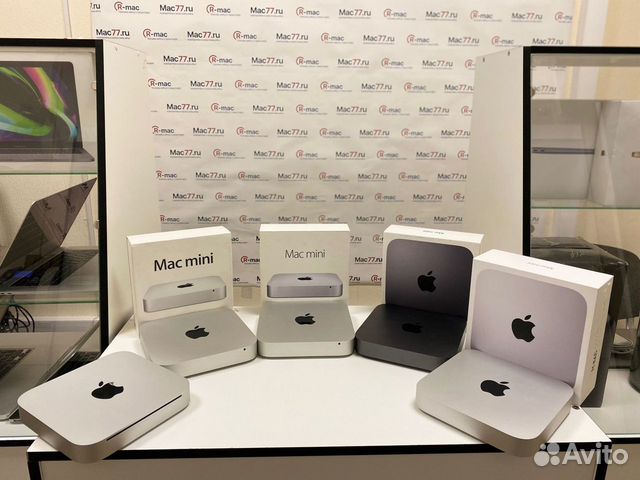
They’re designed for cases where either of those two boxes are simply overkill, or where you just don’t have a sever room or anything close to that.
APPLE I MAC MINI 2010 PRO
The Mac mini server is not designed to replace a Mac Pro or Xserve. They also throw off a lot more heat and need a lot more electricity.īut comparing them that way is missing the point. Admittedly, each one of those boxes is going to do more, but they’re not going to do more sitting quietly on a shelf in an office. So, for the cost of a single traditional server, you can get two or three Mac mini servers. The base cost of a Mac mini server is $999. Ports: (from left to right) Power, gigabit ethernet, FireWire 800, HDMI, Mini DisplayPort, USB 2.0 (x4), SD Card, audio in, audio outĪs far as redundancy goes, “get two, they’re small” works here. (However, if you’re considering a SAN or NAS back end, I’d posit that you’re probably moving past the Mac mini server’s sweet spot, at least for that task.) If you need it to be a file server for a graphics design firm or video editors, you’re going to run into storage issues pretty quickly, and with only one built-in ethernet port, the Mac mini server is not the most ideal candidate to talk to a SAN or NAS setup. You only get 500GB in a mirrored configuration, or two 500GB drives as standalone volumes. The biggest limitation of the Mac mini server tends to be storage. Really, if you’re talking about any one service, such as Wikis, Chat, Calendaring, internal Websites, light Podcast Producer work, Mobile Access Server, even e-mail, the Mac mini server is going to be able to handle those needs rather well for up to around 200 or so users per computer. (They confirmed it enough that I’m planning on getting a couple of Mac mini servers to be my next Open Directory replicas.) The Mac mini server is a great fit for this, and my conversations with Apple representatives confirmed this. Storage needs for such servers are minimal, (even a large Open Directory entry is still going to only run about 1MB in size), so you don’t need a lot of storage space. You also tend to build redundancy into Open Directory setups via having separate Master and Replica servers anyway. LDAP & Kerberos lookups are typically not going to stress a server too much. While a directory server gets a lot of use, it’s not terribly high-CPU needs. However, the question is, what is a server with little redundancy in its design useful for? Well, if you think about redundancy in terms of the entire box and not components in the box, the answer to that question is “rather a lot.” The first thing that springs to my mind is as an Open Directory server. But as an emergency backup or to reinstall the OS on the Mac mini server, an SD card will work rather nicely.

Apple was clear that you don’t want to use an SD card as the normal boot device on these servers-they’re not designed for that.
APPLE I MAC MINI 2010 INSTALL
One handy feature of the Mac mini server: since it supports large-capacity SD cards, you can install an OS on one and boot from it. Apple says both the optical drive and ethernet adapter for the Air are supported by the Mac mini server, although you’re obviously not going to get the same speed from a USB ethernet adapter as you are from gigabit ethernet. If you simply must have dual ethernet ports, you can again, borrow from the MacBook Air, and use the Apple USB Ethernet Adapter ($29). If you must have an optical drive, you can get the Apple MacBook Air SuperDrive ($99), although with technology like NetBoot, that’s no longer as necessary as it once was.


Those things aren’t as off-putting as they may seem. There’s no optical drive, no redundant power supplies, and no extra ethernet ports. What you don’t get are some things considered requirements for a server. It’s not a Mac Pro, it’s not an Xserve, but it’s not useless, either. What you do get is a small form factor that ships with a 2.66GHz Intel Core 2 Duo CPU, 4GB of RAM, (upgradeable to 8GB), dual 500GB 7200-rpm hard drives, one gigabit ethernet port, a FireWire 800 port, HDMI out, Mini DisplayPort, four USB 2.0 ports, an SD card slot with SDXC card support, and a nVidia GeForce 320M graphics processor with 256MB of DDR3 SDRAM. It doesn’t require a rack, it doesn’t take up a lot of space, and doesn’t use a lot of power (around 10 watts at idle, according to Apple). However, in spite of all the things it doesn’t have, if you keep your expectations correct, the Mac mini with Snow Leopard Server is a highly useful box that’s perfect as a utility server, or a do-it-all SOHO box. Up until the current generation of mini, they still had AC power bricks! What kind of server has a brick? Heck, the server version of the Mac mini doesn’t even have an optical drive. They don’t have redundant power supplies or ethernet ports. As a longtime a fan of utility servers and “the right tool for the job”, I’m still amused at how odd the idea of a Mac mini as a server can be.


 0 kommentar(er)
0 kommentar(er)
